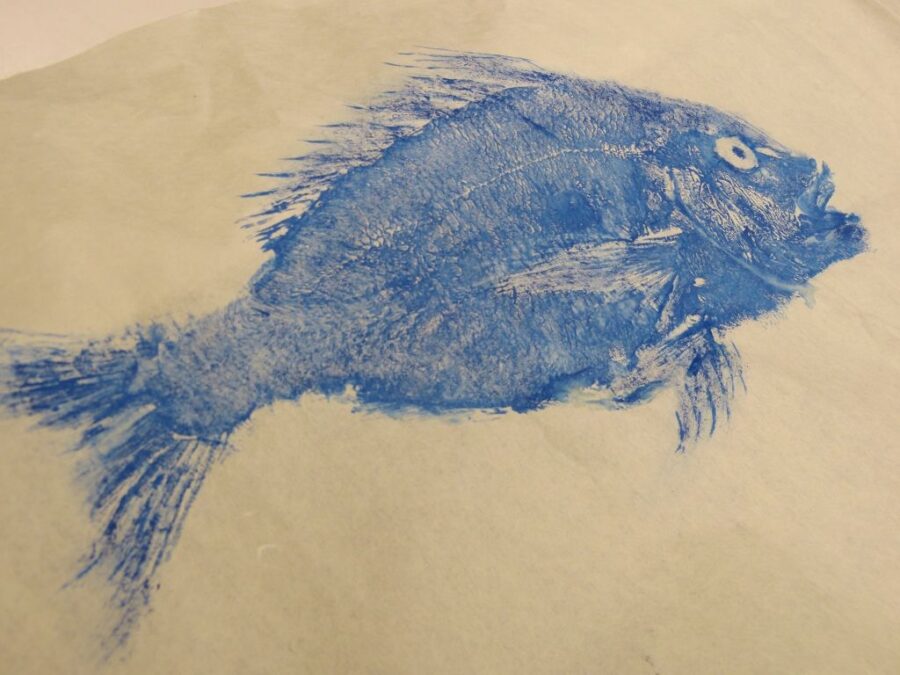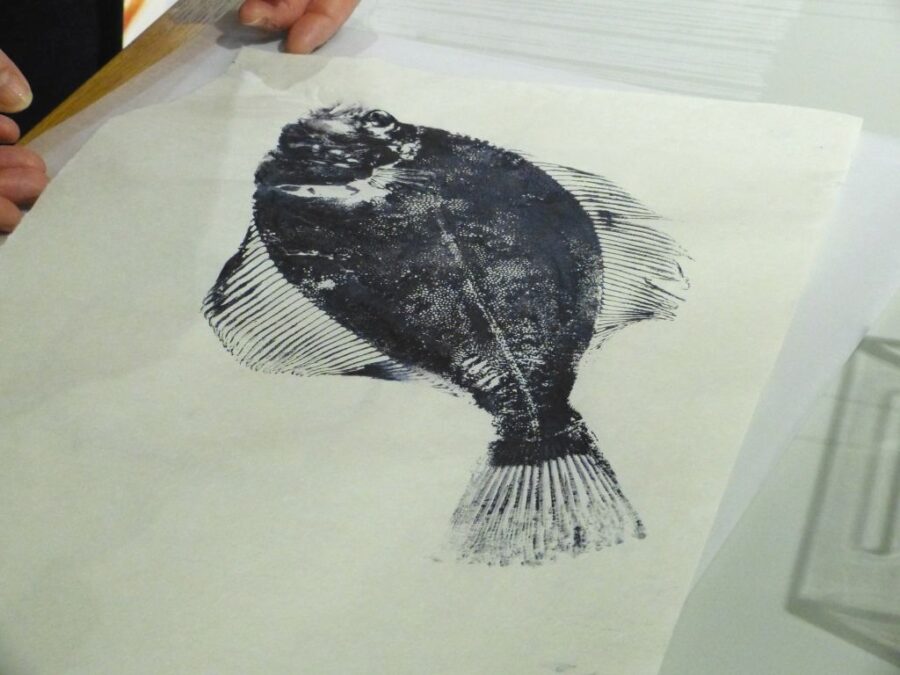Fish printing workshops celebrating Gyotaku, a traditional form of Japanese art, will take place at the Old Low Light Heritage Centre on North Shields Fish Quay later this month.
Newcastle-based artist, Allan Barnfather, in partnership with Northern Print, will lead two workshops on Friday 21 January. One has already sold out but tickets at £15pp are still available for the morning workshop, from 10am to 12noon. They can be booked at: https://oldlowlight.co.uk/event/gyotaku-fish-printing-workshop-10am-12-noon/
Gyotaku began in Japan in the mid-1800s as a way for fishermen to keep a record of the fish they caught. They would apply Sumi. a special type of ink usually used by Japanese calligraphers, to one side of a freshly caught fish, cover the fish with rice paper and then rub it to create an exact image of the fish.
Allan, who regularly runs art workshops with community groups across the region, first became interested in Gyotaku five years ago during an international print exhibition at Northern Print, when Portuguese artist Rachel Ramirez ran a masterclass.
“It’s a way of printing that’s been used for centuries in Japan, starting with fishermen in the 1800s who had to prove their catch. Gyo means fish and Taku means rubbing or impressing. It’s a good way of getting into printing because it can be done using basic materials,” he said.
The workshops are part of a programme of events taking place at the Old Low Light linked to its current exhibition, ‘That’s Women’s Work’, which tells the story of the important role of women in fishing and maritime related industries past and present.
Centre director, Guy Moody, said: “Since our exhibition opened last summer, we have delivered several supporting events celebrating different and diverse aspects of the fishing industry. Although Gyotaku is not directly associated with women, it is another example of how fishing has influenced arts, culture and heritage.
“We are pleased to welcome Allan Barnfather to the Old Low Light so that local people can have the opportunity to try out this traditional form of art which clearly had an important place in the Japanese fishing industry many years ago.”


